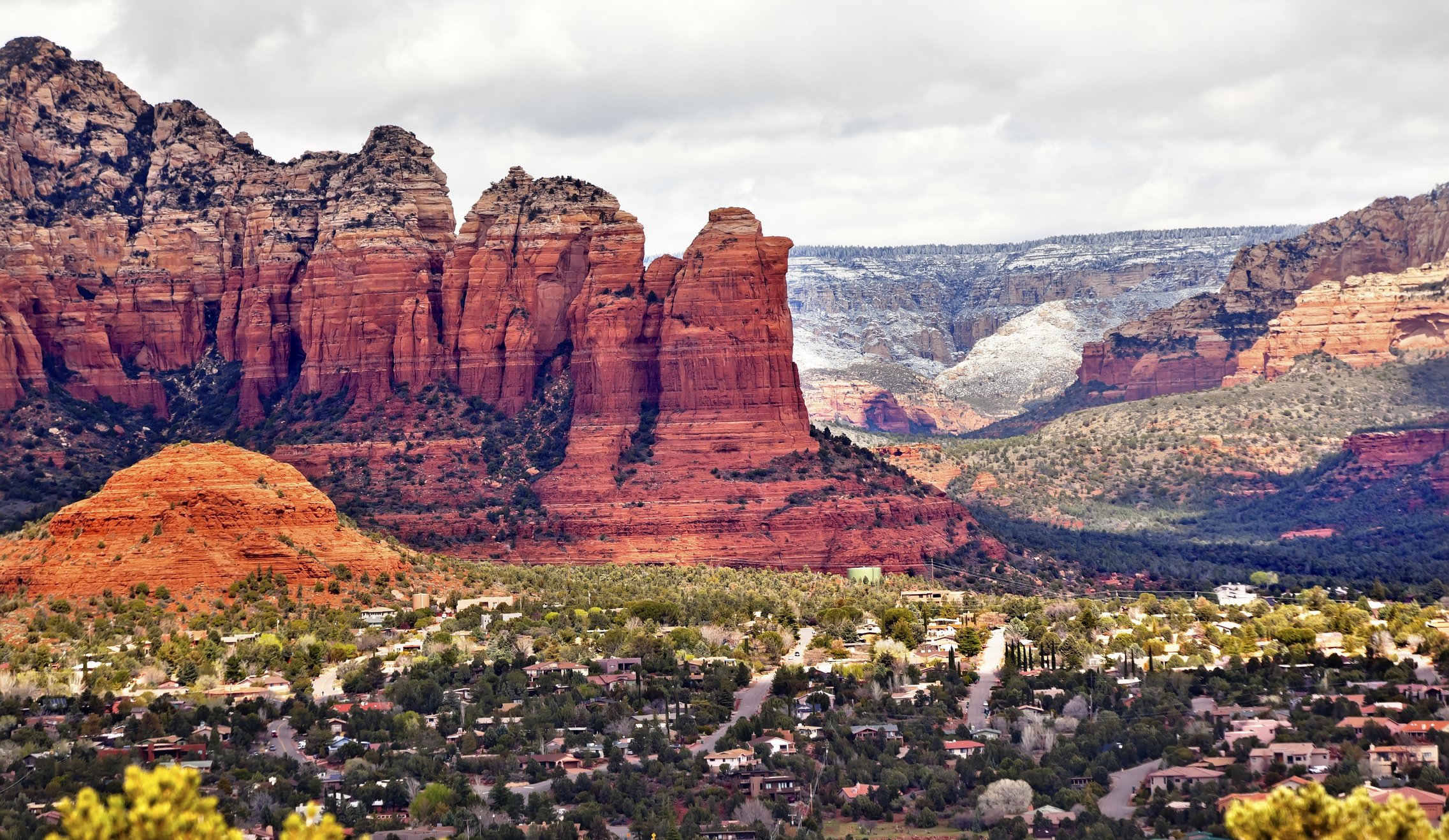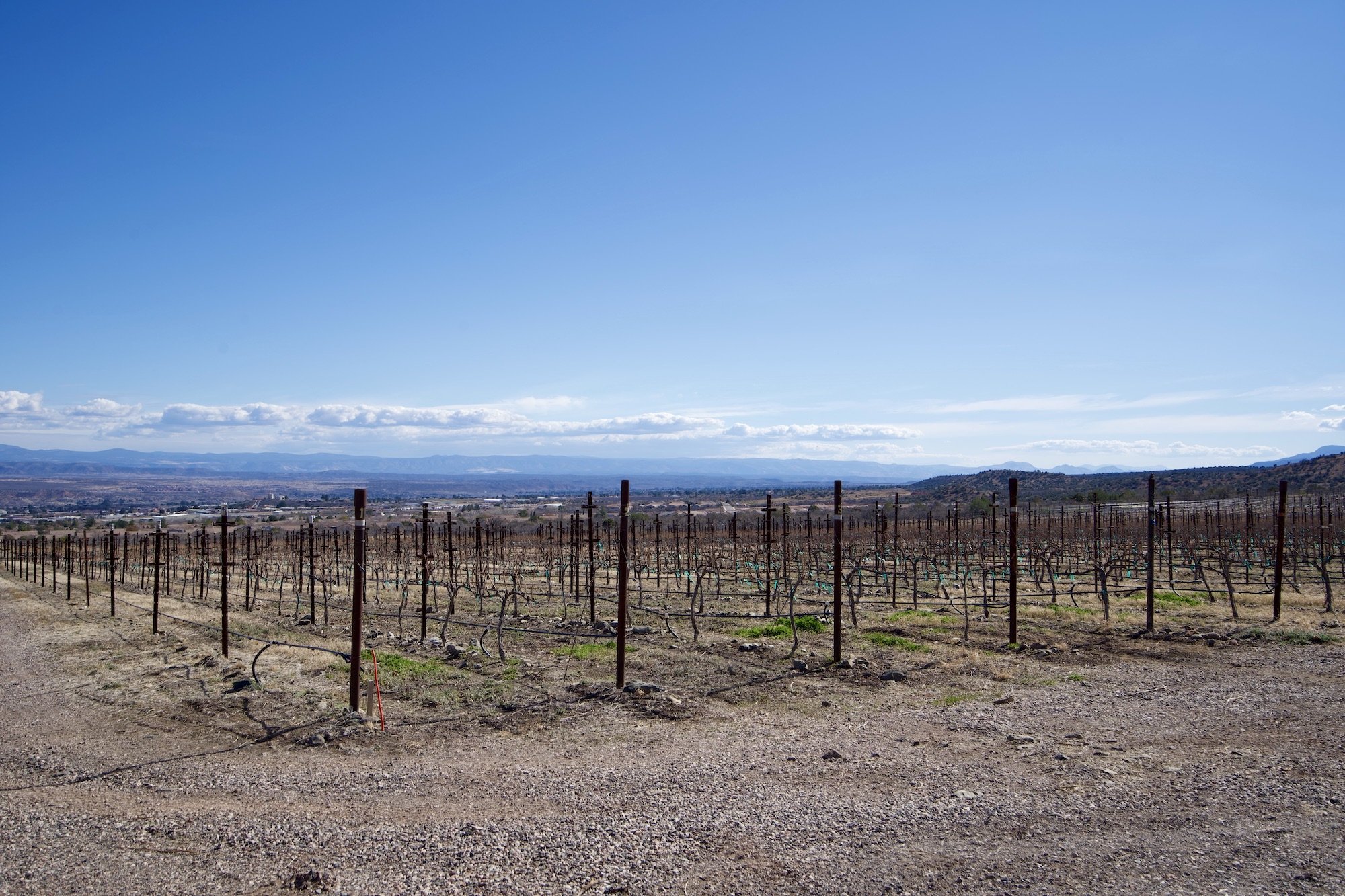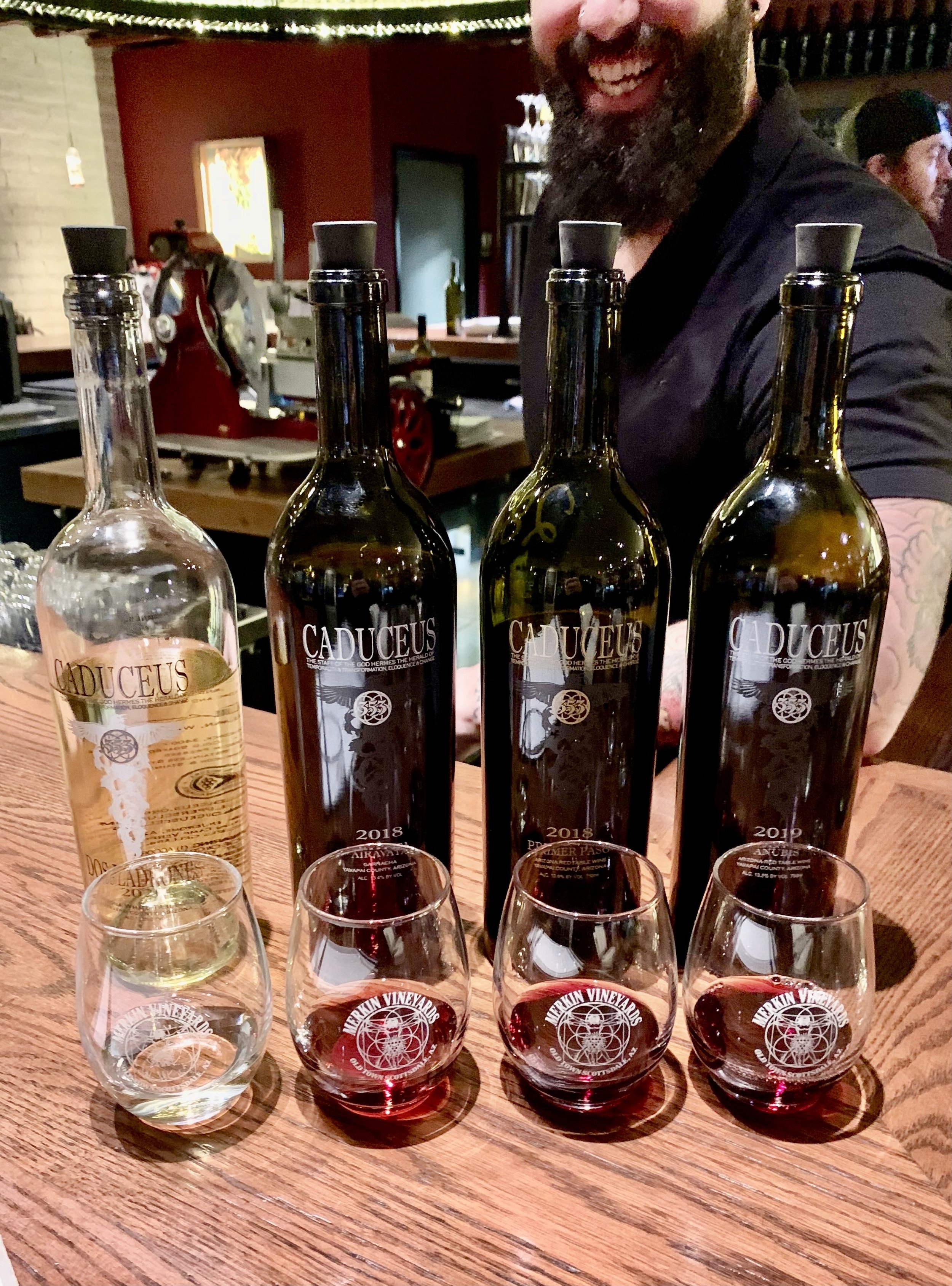Why Wines Produced in Arizona Are Better Than You Might Expect
Sedona red rocks
The thought of well-made wines coming from Arizona surprises many consumers. Better known for expansive desert vistas, the red rocks of Sedona, and the Hoover Dam than quality wine, the Grand Canyon state has rarely been included in serious wine conversations.
Look a little deeper into what is actually being made, and a much different truth emerges. Arizona wines are gaining more acclaim and with good reason. Although the 48th state only issued its first official license to produce wine commercially in the early 1980s, steady focus and investment and superb growing conditions have resulted in a thriving industry boasting more than 120 producers creating award-winning wines, and they’re just getting started.
For wine lovers, a closer look at why Arizona is having so much success is well worth the effort.
Arizona Wine History
The region’s wine culture dates back to the mid-16th century when Spanish explorers recognized the similarities between the soils of southern Arizona and their native Spain. Ninemissions were established between 1629 and 1691, and they all planted vineyards. Those located in what is now Santa Cruz County enjoyed particular success.
As the population grew, more permanent settlements were established and they, too, planted vineyards. Because they were independent of the church they were free to plant whatever varietals they preferred. Many chose to plant Tempranillo, the dominant grape of their home.
In 1853, the United States purchased Arizona from Mexico. Once the sale was completed, the gold mining industry exploded, creating a massive economic boom for the region. European miners flocked to the area, bringing their demand for wine. This influx of wine-thirsty workers resulted in Arizona’s increasing production, eventually exceeding California’s wine production, which would last well into the 20th century.
In 1912 Arizona formally became the 48th and final contiguous state. Just two years later, a small group of prohibitionists pushed through legislation that would bring all wine production and consumption to a halt. On January 1, 1915, the bill went into effect, nearly five years before federal prohibition. So swiftly was the law enacted, most of the small wine producers affected didn’t even know it existed until they were cited for violating it.
When prohibition was repealed in 1933, each state was allowed to define its own alcohol laws. Arizona chose to employ a three-tiered distribution system that empowered distributors to bring in wine from out-of-state suppliers and then sell it to licensed retailers, stifling efforts to make wine within the state.
Further attempts to produce wine in Arizona wouldn’t be made for nearly 40 years. In 1970, a soil scientist from the agriculture school at the University of Arizona planted test vineyards across the state to measure Arizona’s viability. The results were extremely encouraging and in 1982 the first license to grow and produce wine was granted to R.W. Webb who began his winery in Cochise County. Today there are nearly 120 licensed and bonded wineries in the state, with plans to continue expanding.
The Terroir of Arizona Wine Country
Strive Vineyard Cabernet Franc
Arizona has three American Viticultural Area (AVA) wine regions - Willcox, Sonoita, and the Verde Valley.
Both Willcox and Sonoita are located in the south. They are the most prolific wine-producing regions in Arizona, accounting for nearly 75% of all grape production in the state. Willcox has a near-perfect climate and soil composition for grape growing. Located in the southeast corner of the state, the elevation is between 4,200 and 5,000 feet, high above the heat of the desert floor. The soils here mostly comprise sand and gravel.
Sonoita vineyards
In neighboring Santa Cruz County, Sonoita was the first to achieve AVA status, largely because of the similarities in soil and climate with Tuscany, Italy. Sonoita has areas of higher elevation, with some areas reaching over 7,000 feet. The soils here also have some sand and soil, but the majority of the land contains sandstone.
To the north is the Verde Valley. Located within Yavapai County, this is Arizona’s newest AVA, achieved in 2021. Like Sonoita, the soil in Verde Valley is mostly sandstone with areas of gravel and sand, although there are also sparse areas of basalt as well. Most of the region sits at or below 3,500 feet, although the northwestern corner of the state exceeds 4,000 feet in places, especially around the old mining town of Jerome.
Arizona’s Climate
Arizona’s wine regions enjoy favorable temperature extremes between daytime highs and nighttime lows. This diurnal shift means the sugar development occurring during the heat and sunshine of the day comes to a near-stop overnight because of the colder temperatures, allowing the vines to rest and conserve energy. This shift lets the grapes retain more acidity, keeping the resulting wine fresh and lively. Interestingly, Arizona has the second-highest diurnal shift globally, behind only Mendoza, Argentina.
Another significant benefit is a longer growing season. Because the shift happens day after day, the grapes develop sugars more slowly, taking longer to reach their ideal ripeness. This delay pushes harvests further into the fall. The additional hang time results in fruit with bolder flavors and the potential for higher alcohol.
The southern vineyards experience a subtropical desert climate similar to wine regions in Argentina and California. Seasonal temperatures can top a searing 100°F in the summer months to a much cooler 65°F in the winter. The northern vineyards experience a climate more similar to the Mediterranean, with temperature shifts that are less extreme, rarely hitting triple digits.
One of the most impactful factors for Arizona’s wine industry is, incredibly, monsoon season. From mid-June through mid-September, atmospheric pressure changes in northern Mexico shift upward, reversing the weather patterns across the southwestern United States, especially impacting wind direction and strength. (“Monsoon” actually refers to wind shifts and not to precipitation, although it is concomitant with the change.) These shifts create the potential for extreme rainfall and monsoon thunderstorms.
These storms are welcomed by the farmers. The increased rainfall is critical for the vines to grow, and the excess moisture helps replenish local aquifers. It’s a double-edged sword, however. Those same rains that bring relief from desert conditions can also jeopardize harvests, especially if hail is involved. A strong enough hail storm can significantly damage crop growth. The timing of the storms is also a constant challenge, making it difficult to plan reliable harvest dates.
Notable Wines of Arizona
Caduceus Winery Tasting Room
With more than 120 wineries to visit, Arizona’s three regions offer a remarkably wide range of wines beyond the classic chardonnay, malbec, and cabernet sauvignon. Caduceus Cellars offers a naturally sparkling Pet-Nat wine made from chardonnay and malvasia and a rosé crafted from monastrellv. Strive Vineyards produces a beautifully refreshing wine made from the French grape picpoul. Other grapes grown include cabernet franc, syrah, and even more unexpected varieties like aglianico.
Southern Arizona wines are nuanced and complex, capable of emulating those found in California and Argentina in quality and power. Sonoita’s natural ability to retain water and the cool air effect of the nearby mountains create excellent conditions for growing award-winning cabernet sauvignon, merlot, and sauvignon blanc. The Sonoran Wines 2018 Real de Terrenate red blend is an award winner. The 2021 Mouvedre from Callaghan Wines in Elgin are also award winners.
North and Central Arizona wines reflect the region’s Mediterranean-style climate. Grapes here develop thick, richly colored grapes with bold flavors. Many producers have tasting rooms open to the public. Chateau Tumbleweed offers wines made from graciano, montepulciano, grenache blanc, and others. Page Spring Cellars, founded by Arizona wine trailblazer Eric Glomski, makes wine from vidal blanc, marsanne, and roussanne, amongst others.
Southwest Wine Center
Verde Valley is also home to the Southwest Wine Center at Yavapai College, home to one of the only enology and viticulture programs run entirely by students in the country. The on- campus winery acts as a living classroom where students learn the concepts of making wine through an entirely hands-on approach from planting vines to bottling and labeling.





